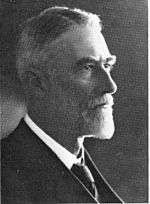CGR 3rd Class 4-4-0 1901
|
CGR 3rd Class 4-4-0 of 1901 Wynberg Tender | |||||||||||||||||||||||||||||||||||||||||||||||||||||||||||||||||||||||||||||||||||||||
| |||||||||||||||||||||||||||||||||||||||||||||||||||||||||||||||||||||||||||||||||||||||
| |||||||||||||||||||||||||||||||||||||||||||||||||||||||||||||||||||||||||||||||||||||||
| |||||||||||||||||||||||||||||||||||||||||||||||||||||||||||||||||||||||||||||||||||||||
| |||||||||||||||||||||||||||||||||||||||||||||||||||||||||||||||||||||||||||||||||||||||
The Cape Government Railways 3rd Class 4-4-0 of 1901 was a South African steam locomotive from the pre-Union era in the Cape of Good Hope.
In 1901, the Cape Government Railways placed another six 3rd Class Wynberg Tender locomotives with a 4-4-0 American type wheel arrangement in suburban service in Cape Town. It was a heavier and more powerful version of the 3rd Class locomotive of 1898.[1][2][3]
Manufacturer
Six more 3rd Class Wynberg Tender passenger locomotives entered service on the Cape Government Railways (CGR) in 1901 for suburban service in Cape Town. They were built by Sharp, Stewart and Company and numbered in the range from 6 to 11.[1][2]

Also designed by H.M. Beatty, these locomotives were very similar in design to the 3rd Class 4-4-0 of 1898, but larger and more powerful. They were built for speed and had the largest coupled wheels of any locomotive on the CGR to date, at 60 inches (1,524 millimetres) diameter.[1]
In later years, this driving wheel size became the accepted size for mixed traffic and general purpose locomotives on mainline service in South Africa. During the rest of the steam era in South Africa, only four locomotive types were to be introduced with larger driving wheels, post-delivery modifications excluded.[1]
Service
Cape Government Railways
These locomotives were also known as Wynberg Tenders. They were also designed with reverse running in mind, with a weatherboard mounted on the six-wheeled tender’s front to protect the crew from the elements when running tender first.[1]
South African Railways

When the Union of South Africa was established on 31 May 1910, the three Colonial government railways (CGR, Natal Government Railways and Central South African Railways) were united under a single administration to control and administer the railways, ports and harbours of the Union. Although the South African Railways and Harbours came into existence in 1910, the actual classification and renumbering of all the rolling stock of the three constituent railways were only implemented with effect from 1 January 1912.[4][5]
In 1912, the six locomotives were considered obsolete by the SAR, designated Class 03 and renumbered by having the numeral "0" prefixed to their existing numbers. In SAR service, they continued to work Cape Town's suburban trains. Despite being considered obsolete, all six engines survived until c. 1918, when two were withdrawn from service. The other four survived in service until after 1931.[2][3][5]
Works numbers
The works numbers, original numbers and renumbering of the Cape 3rd Class of 1901 are listed in the table.[1][5]
Works no. |
Orig. no. |
SAR no. |
|---|---|---|
| 4710 | 6 | 06 |
| 4711 | 7 | 07 |
| 4712 | 8 | 08 |
| 4713 | 9 | 09 |
| 4714 | 10 | 010 |
| 4715 | 11 | 011 |
References
| Wikimedia Commons has media related to CGR 3rd Class 4-4-0 1901. |
- 1 2 3 4 5 6 Holland, D.F. (1971). Steam Locomotives of the South African Railways, Volume 1: 1859-1910 (1st ed.). Newton Abbott, Devon: David & Charles. pp. 59–60. ISBN 978-0-7153-5382-0.
- 1 2 3 Paxton, Leith; Bourne, David (1985). Locomotives of the South African Railways (1st ed.). Cape Town: Struik. p. 18. ISBN 0869772112.
- 1 2 Espitalier, T.J.; Day, W.A.J. (1944). The Locomotive in South Africa - A Brief History of Railway Development. Chapter II - The Cape Government Railways (Continued). South African Railways and Harbours Magazine, January 1944. pp. 9-12.
- ↑ The South African Railways - Historical Survey. Editor George Hart, Publisher Bill Hart, Sponsored by Dorbyl Ltd., Published c. 1978, p. 25.
- 1 2 3 Classification of S.A.R. Engines with Renumbering Lists, issued by the Chief Mechanical Engineer's Office, Pretoria, January 1912, p. 26. (Reprinted in April 1987 by SATS Museum, R.3125-6/9/11-1000)
